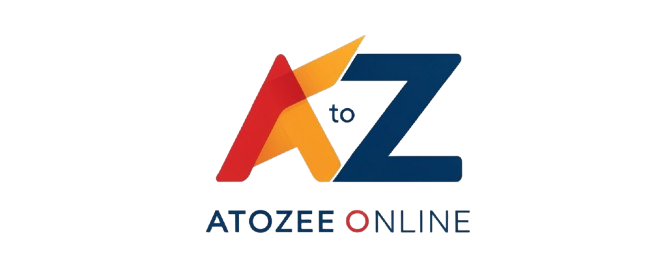Student Loan Debt Relief

Student Loan Debt Relief
“Discover effective strategies and options for student loan debt relief in our comprehensive guide. Learn about loan forgiveness programs, refinancing, and financial management tips to lighten your financial burden and pave the way to a debt-free future.”
Introduction:
The journey of pursuing higher education is an enriching one, but it frequently comes at a high cost. Student loan debt is a financial commitment that millions of students must grapple with, long after they’ve donned their graduation cap. However, there is hope, and that hope comes in the form of student loan debt relief.
Understanding Student Loan Debt
Student loan debt is a significant financial obligation that many individuals take on to pursue higher education. It’s essential to grasp the key aspects of student loans before diving into strategies for relief.
1. Types of Student Loans
Student loans come in two primary forms: federal and private loans. Federal loans are funded by the government and typically offer more borrower-friendly terms, including lower fixed interest rates and various repayment options. Private loans, on the other hand, are provided by banks or other financial institutions and often have higher interest rates.
2. Accumulating Interest
One critical feature of student loans is the accrual of interest. This means that the balance of your loan can increase over time, especially if you defer payments or choose an income-driven repayment plan. Understanding how interest affects your loan is crucial for managing your debt effectively.
3. Repayment Schedule
Most student loans come with a predetermined repayment schedule. After graduation, you’re required to start making regular monthly payments. The length of this repayment term can vary depending on the type of loan and the specific terms you agreed to.
4. Grace Period
Many federal student loans offer a grace period, which is a window of time after graduation when you’re not required to make payments. This period is typically six months, providing you with some breathing room to secure a job and start your career before repayment begins.
5. Deferment and Forbearance
In some situations, such as financial hardship or returning to school, you may be eligible for deferment or forbearance. These options allow you to temporarily halt your loan payments without going into default.
6. Default Consequences
Having a student loan default might have serious repercussions. It can damage your credit score, result in wage garnishment, and even lead to legal actions. It’s crucial to avoid defaulting at all costs.
7. The Impact on Financial Health
Student loan debt can significantly impact your overall financial health. It can affect your ability to save, invest, or make significant purchases like a home or a car. Understanding the long-term financial implications is vital.
8. Loan Servicers
When you have student loans, you’ll work with a loan servicer, an organization responsible for managing your loan account. It’s essential to maintain open communication with your loan servicer to stay informed about your repayment options and any changes in your loan terms.
The Importance of Student Loan Debt Relief
Student loan debt relief is a critical lifeline for millions of individuals burdened with the financial aftermath of pursuing higher education. It is very important for a number of reasons.
1. Financial Freedom
Student loan debt relief is the gateway to financial freedom. Graduates can break free from the shackles of loan repayments and allocate their income towards other essential aspects of life, such as saving, investing, or pursuing their goals.
2. Improved Credit Score
The burden of student loan debt can weigh heavily on your credit score, affecting your ability to secure credit for important milestones like buying a home or a car. Debt relief helps repair and rebuild your credit, opening doors to more opportunities.
3. Reduced Stress and Anxiety
Dealing with mounting student loan debt can be emotionally and mentally taxing. The constant worry and stress about repayments can lead to anxiety and negatively impact your overall well-being. Relief programs provide peace of mind and reduce this emotional toll.
4. Financial Flexibility
With student loan debt relief, you gain greater financial flexibility. You can make decisions based on your interests and aspirations rather than being constrained by the need to make hefty monthly loan payments.
5. Economic Impact
Student loan debt relief doesn’t only benefit individual borrowers; it also has a broader economic impact. When individuals are relieved of heavy student loan burdens, they are more likely to invest in the economy by making significant purchases, contributing to overall economic growth.
6. Pursuit of Further Education
Debt relief can also facilitate the pursuit of further education or skill enhancement. Many borrowers are hesitant to continue their education due to the fear of accumulating more debt. With relief, they are more likely to consider advanced degrees or certifications to enhance their career prospects.
7. Enhanced Quality of Life
Ultimately, student loan debt relief enhances your overall quality of life. It provides the freedom to make choices that align with your values and long-term goals, whether it’s starting a family, traveling, or pursuing your dream career.
Types of Student Loan Debt Relief Programs
Student loan debt relief programs are designed to provide borrowers with various options to manage and reduce their student loan obligations. These programs are crucial for those seeking financial relief. Here are some of the most common types of student loan debt relief programs:

1.Federal Student Loan Forgiveness Programs:
Federal student loan forgiveness programs are government initiatives that forgive a portion or the entire balance of eligible federal student loans. These programs are typically based on specific criteria, such as working in a certain field or making a certain number of on-time payments.Among the popular federal loan forgiveness initiatives are:
- Public Service Loan Forgiveness (PSLF): Forgives the remaining loan balance for individuals working in public service or government jobs after making 120 qualifying payments.
- Teacher Loan Forgiveness: Provides forgiveness for teachers working in low-income schools or educational service agencies after five years of service.
- Military Service Loan Forgiveness: Offers loan forgiveness for members of the military based on their service branch and role.
2.Income-Driven Repayment Plans:
Income-driven repayment plans are designed to make student loan payments more affordable for borrowers with low or fluctuating incomes. These programmes use the borrower’s income and family size to determine monthly payments. Common income-driven repayment plans include:
- Income-Based Repayment (IBR): Caps monthly payments at a percentage of the borrower’s discretionary income and offers loan forgiveness after 20-25 years of on-time payments.
- Pay As You Earn (PAYE): Limits payments to a percentage of income and forgives any remaining balance after 20 years of on-time payments.
- Revised Pay As You Earn (REPAYE): Similar to PAYE but doesn’t have income restrictions and offers forgiveness after 20-25 years of payments.
3.Student Loan Refinancing:
Student loan refinancing involves obtaining a new loan with more favorable terms to pay off existing student loans. Borrowers may choose to refinance their loans to secure lower interest rates, reduce monthly payments, or consolidate multiple loans into one. Refinancing is typically offered by private lenders and may not be suitable for federal loan borrowers, as it can result in the loss of federal loan benefits.
4.Loan Consolidation:
Loan consolidation is a federal program that allows borrowers to combine multiple federal loans into one loan with a fixed interest rate. This simplifies the repayment process by reducing the number of monthly payments and can extend the loan term to make payments more manageable.
5.State-Specific Programs:
Some states offer their own student loan forgiveness and repayment assistance programs. These programs are often designed to incentivize professionals to work in underserved or high-need areas within the state.
6.Public and Nonprofit Employees Forgiveness:
Under certain conditions, public and nonprofit employees may be eligible for loan forgiveness through the PSLF program after ten years of on-time payments.
The Role of Private Lenders
While federal student loans are the most common source of educational funding, private lenders also play a significant role in helping students and their families finance higher education. Understanding the role of private lenders is essential for borrowers who may be considering private loans as part of their financial strategy. Here’s a closer look at the role of private lenders in the realm of student loans:
1. Alternative Funding Source:
Private lenders, such as banks, credit unions, and online financial institutions, offer private student loans as an alternative funding source for educational expenses. These loans can be used to cover tuition, textbooks, room and board, and other college-related costs not fully met by federal loans, scholarships, or personal savings.
2. Credit-Based Lending:
Private student loans are typically credit-based, meaning that the borrower’s creditworthiness and financial history are considered during the loan application process. This differs from federal loans, which are primarily need-based and do not require a credit check.
3. Interest Rates and Terms:
Private lenders offer student loans with varying interest rates and terms. These rates can be fixed or variable and are influenced by the borrower’s credit score. Private loans may offer more flexible repayment terms, allowing borrowers to choose from various repayment options.
4. Co-Signers:
Private lenders often require a co-signer for student loans, especially for younger borrowers or those with limited credit histories. A co-signer is typically a parent, guardian, or another creditworthy individual who agrees to take on responsibility for the loan if the primary borrower is unable to repay it.
5. Loan Limits:
Private loans may have higher borrowing limits than federal loans, allowing students to bridge the gap between the cost of attendance and other sources of financial aid. However, it’s essential to borrow wisely and only take out what is necessary to avoid excessive debt.
6. Application and Approval Process:
Private lenders have their own application and approval processes, which can vary from one lender to another. Borrowers must complete these applications, provide necessary documentation, and meet credit requirements to secure a private student loan.
7. Use for Various Educational Expenses:
Private loans can be used to cover a wide range of educational expenses, including undergraduate and graduate programs, professional degrees, and even continuing education or certification courses.
8. Flexibility and Customization:
Private lenders may offer greater flexibility in terms of loan customization. Borrowers can often choose their repayment plans and loan terms based on their financial situation and needs.
9. Interest Rate Negotiation:
In some cases, borrowers with strong credit histories may have the opportunity to negotiate their interest rates with private lenders, potentially securing more favorable terms.
10. Responsibility for Repayment:
Borrowers should be aware that private loans do not offer the same borrower protections and benefits as federal loans. They may not have access to income-driven repayment plans or loan forgiveness options, so careful consideration of loan terms is crucial.
Steps to Achieve Student Loan Debt Relief
Achieving relief from the burden of student loan debt requires a proactive approach and careful consideration of your financial situation. Here are essential steps to help you navigate the path towards student loan debt relief:
1. Evaluate Your Current Student Loan Situation:
Start by gathering all your student loan documents and assessing the details of each loan. Take note of the loan type, interest rates, outstanding balances, and the servicer’s contact information.This thorough summary will assist you in comprehending the extent of your debt.
2. Research Available Relief Programs:
Familiarize yourself with the various student loan debt relief programs available, including federal and private options. Explore the eligibility criteria and benefits of each program to determine which ones align with your circumstances.
3. Consider Income-Driven Repayment Plans:
If you have federal student loans and are facing financial challenges, consider enrolling in an income-driven repayment plan. These plans adjust your monthly payments based on your income and family size, making them more manageable. Some of the commonly used income-driven repayment plans include Income-Based Repayment (IBR), Pay As You Earn (PAYE), and Revised Pay As You Earn (REPAYE).
4. Explore Student Loan Refinancing:
For borrowers with both federal and private student loans, loan refinancing may be a viable option. Refinancing involves consolidating multiple loans into a single private loan with a new interest rate and terms. This can potentially lower your monthly payments or reduce the overall cost of your debt.
5. Contact Your Loan Servicer:
Reach out to your loan servicer to discuss available repayment options and seek guidance on relief programs. They can provide insights into managing your loans and help you understand the specifics of your situation.
6. Avoid Default:
Avoid defaulting on your loans at all costs, as it can have severe consequences for your credit score and financial well-being. If you’re having trouble making payments, communicate with your loan servicer to explore alternative options such as deferment or forbearance.
7. Review and Adjust Your Budget:
Assess your budget and financial habits. Determine where you can cut costs and allocate more funds toward your student loan payments. Creating a detailed budget can help you stay on track with your financial goals.
8. Consider Additional Income Sources:
Exploring additional income sources, such as part-time jobs or freelance work, can provide extra funds to put towards your loan payments. Every additional payment can accelerate your journey to debt relief.
9. Set Clear Financial Goals:
Establish specific financial goals, both short-term and long-term. Whether it’s paying off your loans within a certain timeframe or reaching a specific debt balance, having clear objectives will keep you motivated.
10. Stay Informed and Updated:
Keep yourself informed about changes in student loan policies and regulations. Staying updated on the latest developments can help you make informed decisions about your debt relief strategies.
11. Seek Professional Guidance:
If you find managing your student loans overwhelming, consider consulting a financial advisor or student loan counselor.They can offer knowledgeable advice suited to your particular circumstance.
12. Maintain Strong Financial Habits:
Develop good financial habits, including saving, investing, and budgeting. These habits can not only help you achieve student loan debt relief but also secure your financial future.
Common Mistakes to Avoid
Managing student loan debt can be a challenging endeavor, and certain mistakes can hinder your progress toward debt relief. Here are common mistakes to avoid in your journey to handle student loan debt effectively:
1. Defaulting on Loans:
One of the most significant mistakes you can make is defaulting on your student loans. Defaulting can have severe consequences, including damage to your credit score, wage garnishment, and legal actions. Always communicate with your loan servicer if you’re facing financial difficulties to explore alternative options, such as deferment, forbearance, or income-driven repayment plans.
2. Ignoring Communication from Loan Servicers:
Failing to respond to communication from your loan servicer can lead to missed opportunities for relief. Stay attentive to emails, letters, and phone calls, as they may contain important information about your loans or available assistance programs.
3. Not Researching Available Relief Programs:
One common mistake is not researching the relief programs available to you. Federal and private student loans offer various programs tailored to different financial circumstances. Failing to explore these options can result in missed opportunities for loan forgiveness or more manageable repayment plans.
4. Refinancing Without Careful Consideration:
Refinancing student loans can be a helpful strategy, especially for borrowers with both federal and private loans. Refinancing might not be the best option for everyone, though. Carefully assess the pros and cons, including the potential loss of federal loan benefits, before refinancing.
5. Focusing Solely on Minimum Payments:
Making only the minimum required payments can extend your loan term, resulting in higher overall interest costs. If your financial situation allows, consider making extra payments to pay down the principal and reduce your debt faster.
6. Falling for Scams:
Beware of scams that promise immediate debt relief in exchange for a fee. Legitimate relief programs do not charge upfront fees, and there are no shortcuts to achieving loan forgiveness or debt reduction. Always verify the credibility of any organization offering student loan assistance.
7. Neglecting Your Budget:
Not having a budget or failing to stick to one can lead to poor financial management. Create a detailed budget to track your income, expenses, and loan payments. This can help you make informed financial decisions and avoid unnecessary spending.
8. Not Seeking Professional Guidance:
If managing your student loans becomes overwhelming, don’t hesitate to seek professional guidance from financial advisors or student loan counselors. They can provide valuable insights and strategies specific to your situation.
9. Not Taking Advantage of Interest Tax Deductions:
The interest paid on student loans may be deducted from taxes in certain situations. Failing to take advantage of these deductions can result in higher tax bills than necessary. Consult with a tax professional to ensure you’re optimizing your tax benefits.
10. Neglecting Your Credit Score:
Your credit score plays a crucial role in your financial life. Missing loan payments or defaulting on loans can damage your credit. Maintaining a good credit score is essential for various financial goals, including securing future loans and mortgages.
Success Stories
Sometimes, the journey of managing student loan debt may feel like an uphill battle. However, countless individuals have successfully navigated the path to student loan debt relief and emerged with inspiring success stories. These stories serve as a testament to the power of determination, strategic planning, and financial resilience. Here are a few real-life success stories to motivate and guide you on your own journey:
1. Jessica’s Path to Public Service Loan Forgiveness:
Jessica, a social worker, graduated with substantial federal student loan debt. She knew that her career in public service made her eligible for Public Service Loan Forgiveness (PSLF). Despite the initial challenges of navigating the program’s requirements, Jessica persisted. After ten years of dedicated service and on-time payments, she saw her remaining student loan balance completely forgiven, allowing her to focus on her career and family without the burden of debt.
2. Alex’s Strategic Loan Refinancing:
Alex held a mix of federal and private student loans with varying interest rates. He decided to explore loan refinancing to simplify his repayment process and secure better terms. By refinancing his private loans with a lower interest rate and retaining his federal loans for their benefits, Alex reduced his monthly payments and overall debt. His careful financial strategy allowed him to pay off his loans faster and save on interest.
3. Emily’s Extra Payment Approach:
Emily, a recent graduate with a limited income, was determined to pay off her student loans as quickly as possible. She maintained a strict budget, lived frugally, and made additional payments towards her loans whenever possible. Her consistent efforts resulted in her paying off her loans several years ahead of the original repayment schedule, freeing her from the debt burden.
4. Tom’s Income-Driven Repayment Success:
Tom was facing financial hardships after graduation and struggling to make his federal student loan payments. He enrolled in an income-driven repayment plan that adjusted his monthly payments based on his income. As his income increased, his payments gradually rose, but they remained manageable. Tom stayed committed to the plan, and after 20 years of payments, the remaining balance on his loans was forgiven.
5. Sarah’s Combination of Strategies:
Sarah, a teacher, had both federal and private student loans. She adopted a multifaceted approach to manage her debt. She explored loan forgiveness options for her federal loans while refinancing her private loans to secure a lower interest rate. Sarah’s combination of strategies allowed her to save money on interest and reduce her overall loan balance significantly.
Conclusion:
In the pursuit of higher education, student loan debt can be a daunting obstacle. However, it’s crucial to remember that relief is attainable. By understanding your options, being proactive in managing your loans, and seeking support, you can chart a course toward financial freedom. Don’t let the weight of student loans hold you back; embrace the opportunities that lie ahead.
FAQs
1.Is it possible to get rid of all my student loan debt?
- While it may be challenging to eliminate all student loan debt, there are various relief programs that can significantly reduce the burden.
2.Can I apply for student loan relief if I have both federal and private loans?
- Yes, you can explore options for both types of loans, but the strategies may differ.
3.How do income-driven repayment plans work, and are they suitable for me?
- Income-driven plans modify your payments in accordance with your earnings. They can be a good option if you’re facing financial difficulties.
4.Is student loan refinancing a good idea for me?
- Refinancing can be beneficial if you can secure a lower interest rate and more favorable terms. Yet it’s crucial to consider the advantages and disadvantages.
5.How long does it typically take to achieve student loan debt relief?
- The timeline for achieving relief varies based on your circumstances and the relief program you choose. Patience and persistence are key.
THANKS TO READ MY ARTICLE ON Student Loan Debt Relief





